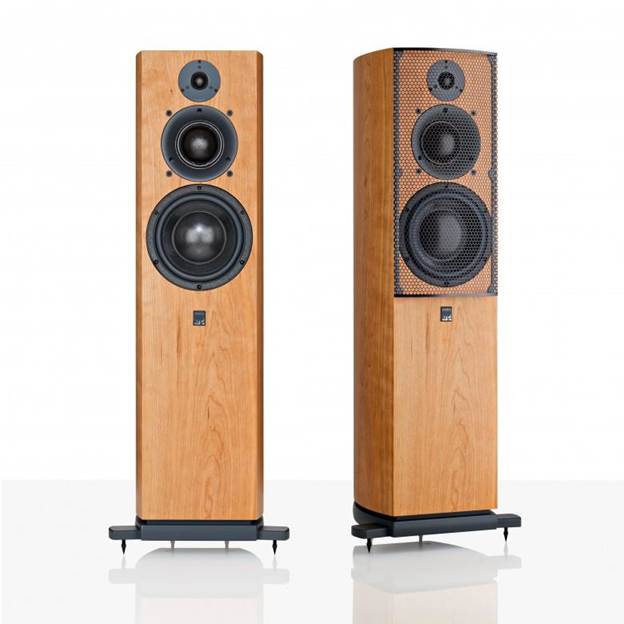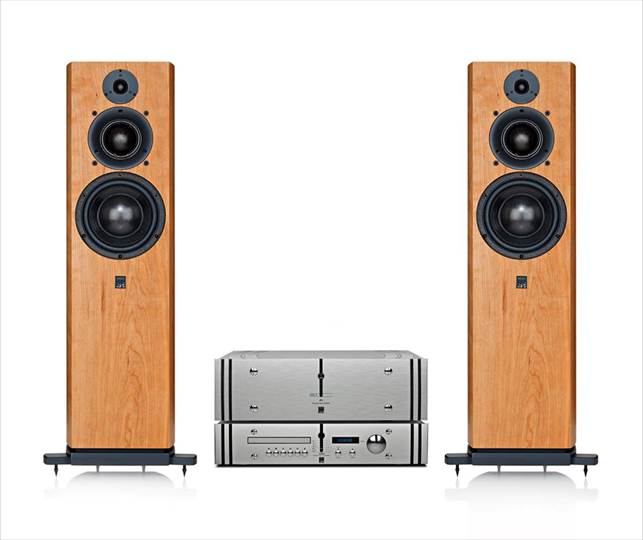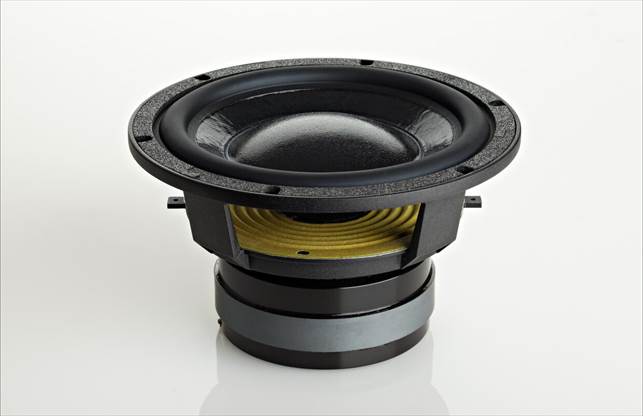Sound quality
There are too many loudspeakers describing themselves
wishfully as ‘studio monitors’, but here we have something that is far closer
to this than most. The big ATC is unerringly revealing of what you put into it,
and certainly doesn’t sugar the pill. But if you imagine that it is cerebral,
analytical and dispassionately forensic then think again. Feed it a high-quality
source via a smooth, punchy solid-state amplifier and you get a startlingly
fine sound back.
In essence, you get a large, wideband sound that’s starker
and more open than anything else I’ve heard at this price. This is made more
apparent by its superb bass; arguments rage about the relative merits of
infinite baffle boxes, but ATC has got this one working brilliantly. The only
downside is that it makes lesser amplifiers feel like a jogger running in
concrete trainers!

ATC SCM40 angle
view
Kraftwerk’s Tour de France Soundtracks is breathtaking -
rarely have I heard its low frequencies in such sharp relief. Positioned just
30cm from my rear wall and toed-in slightly, the speed, power and grip is
superlative - it easily outdoes more expensive big boxes like Spendor’s D7 or
Sonus faber’s Olympica II. The attack transients on the synth bass are superb,
starting and stopping with the speed of an LED. On songs with vast tracts of
low frequencies such as the Moog bass on 4hero’s Cosmic Tree, the bottom end is
rock solid, prodigious and ultra tight, but give it an indie guitar track like REM’s
Maps and Legends and the speaker is relatively circumspect. Basically, it tells
you what’s going on if it is going on, and if it isn’t then it doesn’t! This is
the mark of a serious wideband monitor loudspeaker, and a reminder that so many
reflex ported designs simply aren’t doing bass right. Conventional- holed boxes
have pra ease-of-drive in their favour, but can bring problems related to phase
integrity across the whole frequency. This often means the bass can sound like
it’s a fraction of a second behind.
Not so the SCM40, and the way it integrates its superb low
frequencies with the midband is a joy; in this region it’s more searching than
many, but is never harsh unless the source and/or song is too. It sounds like a
veil has been lifted from in front of the music and it gives an explicit
insight into the proceedings. I am impressed by how deep it digs into Thomas
Dolby’s Airwaves; it ekes its way into the groove and throws out loads of info.
It sets up an accurate stereo soundstage and hangs images back when needed, but
projects well when called upon. It proves highly coherent in its handling of
phase, everything snaps into focus and arrives at the right place and time.

ATC SCM40 proves
highly coherent in its handling of phase, everything snaps into focus and
arrives at the right place and time.
Despite that big, prodigious bass, you would not call the
ATC warm. It has quite a revealing balance that isn’t afraid to ‘do’ bright
when the recording and/or ancillaries dictate. Treble is airy, spacious and
well etched. The looped hi-hats on Beatmasters Who’s In The House? are crispy
and scratchy, which is just how they should be. There’s no gilding of the lily
with the SCM40, everything is handed to you in an accurate and unalloyed way.
Some may find it bright; it’s certainly a fearless critic of your ancillary
components, so if you’ve got some $1,660 separates and you’d like to buy the
ATCs to partner them until you’ve saved up for better, you should be prepared
to be reminded why you need to save up!
In practical terms, this is the biggest problem - they are
too revealing for most front ends and certainly those in their price class.
Most buyers with this sort of money will not want something that tears into
recordings in such a way. Play some classic Blue Note jazz in the form of Lou
Donaldson’s Alligator Bogaloo, and it’s wonderfully sonorous and insightful,
swinging along like you wouldn’t believe. But move to the Byrds’ Eight Miles
High (recorded around the same time) and it sounds disappointingly thin and
insubstantial; it’s still musically enjoyable, but doesn’t half sound poorly
recorded.

ATC SCM40’s 180mm
bass driver
Conclusion
Given a serious source and recording, the new ATC SCM40 is
superb - I know of no price rivals that give this level of accuracy, speed and
insight. It strings the rhythmic elements of the mix together brilliantly,
punching out subtle dynamic inflections in a marvellously satisfying and
visceral way. But then again it will have you fretting about how best to drive
it for years to come, because you know it’s capable of a level of transparency
you’d normally only expect from loudspeakers at three or four times its price.
It’s certainly a great speaker to commit to and build a system around - but if
you’re looking for something that’s simply going to make ‘a nice noise’
regardless of partnering equipment and recordings, then others are certainly
going to be a more appropriate match.
|
Details
·
Product: ATC SCM40 ·
Origin: UK ·
Type: 3-way floorstanding loudspeaker ·
Weight: 31kg ·
Dimensions (WxHxD): 265 x 980 x 300mm ·
Features: Infinite baffle cabinet design; 25mm soft dome
tweeter; 75mm soft dome midband driver; 164mm bass driver ·
Distributor: ATC Loudspeaker Technology Ltd ·
Price: $5,430 ·
For: Superlative clarity; excellent phase coherence; sublime
bass ·
Against: Hard work for an amplifier; too revealing for most ·
Verdict: A great modern monitor loudspeaker, but not for all
|